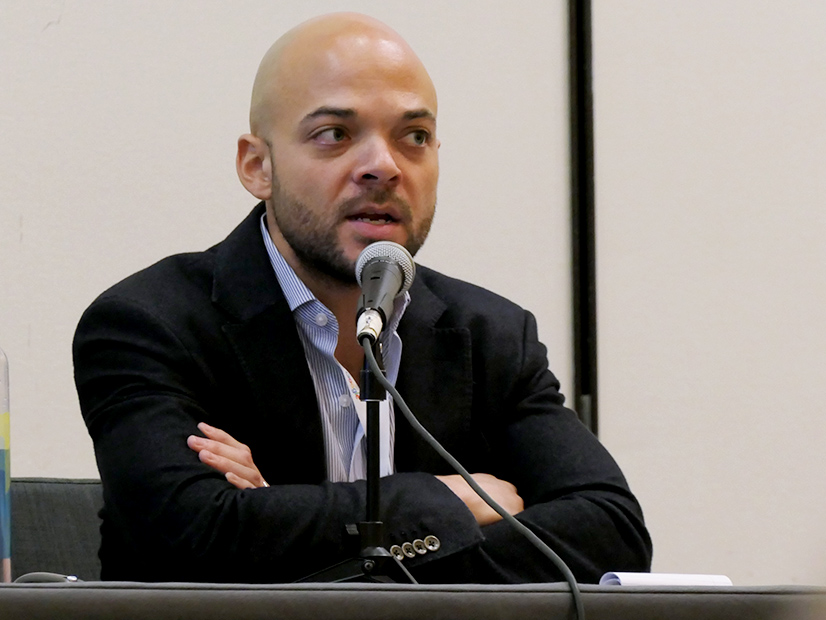ANAHEIM, Calif. — The power industry should encourage increased collaboration and transparency to address the many challenges posed by major new loads, presenters said during the National Association of Regulatory Utility Commissioners’ (NARUC) Annual Meeting Nov. 10-13.
Data centers, hydrogen, transportation and other industries are all contributing to the rapid load growth, which can present both efficiency opportunities and forecasting challenges, according to Natalie Mims Frick, deputy department leader of energy markets and policy at Lawrence Berkeley National Laboratory.
Providing opportunities for conversations between stakeholders can help address those challenges, Frick said. She pointed to the North Carolina Utilities Commission’s recent ruling on Duke Energy’s consolidated carbon plan and integrated resource plan. One of the requirements is that the utility must provide frequent updates on load growth, Frick said.
“Having regular conversations can be really useful about how to deal with the growth and where it’s happening,” Frick said. She added that another requirement the North Carolina commission imposed was requiring the utility to work with their large customers “to try and identify opportunities for efficiency or other resources, whether it’s flexibility or something else.”
“And I think that kind of feeds back into the loop forecasting, you know, making sure that there’s robust consideration of all of the opportunities for the large loads, whether it is through flexibility or demand response to reduce peak demand,” Frick said.
Forecasting from a data center and automation perspective will likely remain a challenge, given confidentiality around business strategies, according to Samantha Klug, enterprise sustainability development director of logistics real estate investor Prologis.
However, it would be helpful if regulators could provide a roadmap around electrification and sustainability incentives, Klug argued.
“Because then what we can do is forecast out these projects and where we want to do them based on those incentives, and when the timing for capital investment is right for us,” Klug said. “And so for us, it’s really the communication between stakeholders.”
In a separate panel discussion, Farah Mandich, presidential sustainability executive at the General Services Administration, argued that transparency is important to help “people understand why the utilities and commissioners are making some of the decisions they do.”
Mandich added that thinking about customers’ needs as an asset, instead of just a problem to solve, is a good “mindset to be in.”
“The federal government is a longstanding existing customer. We are electrifying loads, but we’re not going to be causing the type of growth that you know a data center necessarily is in one given place, but that means that our buildings could potentially be an asset for load flexibility,” Mandich said. “And so thinking about how to bring customers into that conversation up front is really important, because it’ll take us a while to figure out how to do that in our own buildings and work with the utilities effectively.”
Jeff Riles, director of energy markets at Microsoft, noted that customers, regulators and utilities are all cooperating more frequently now than a few years ago. However, he said that there are challenges, including mistrust around growth of the data center industry.
“There’s a real concern about what’s speculative and what’s real,” Riles said. “And there’s a need to make sure that we’re showing up and helping them address the problem of what is speculative and what’s real. And so that’s been another reason why we have begun to engage more directly in a lot of these regulatory proceedings.”
He added that engaging in forums like NARUC “is new for us as an industry, and so we really appreciate the opportunity to have this collaboration. But I will just say we’re growing up right along with you in terms of how we engage in these processes and procedures.”

